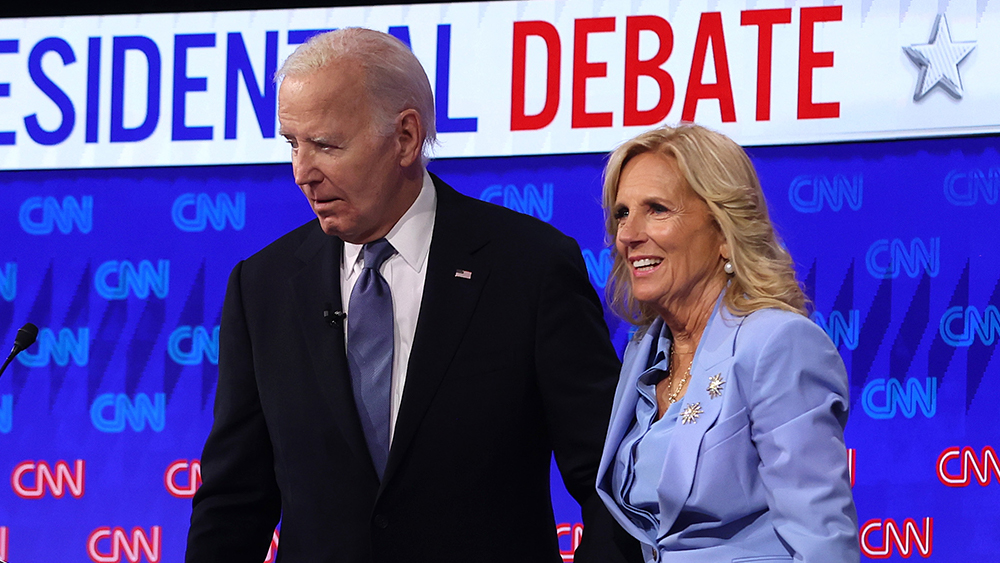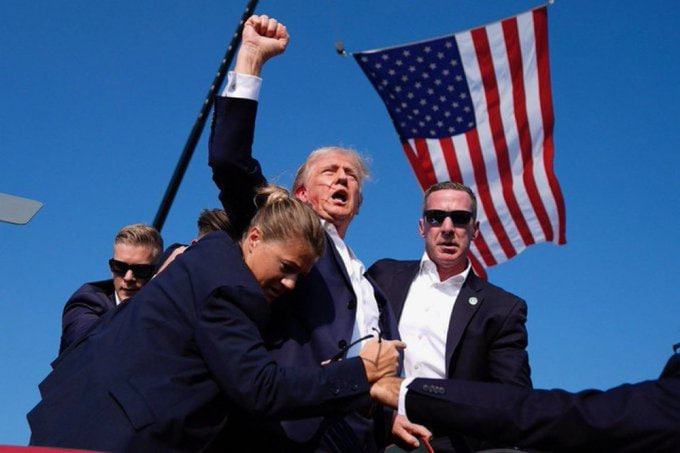Unveiling the Chinese money-laundering network driving America's fentanyl crisis
By richardbrown // 2024-07-10
Tweet
Share
Copy

The Financial Times recently published an extensive analysis titled "The New Money Laundering Network Fueling the Fentanyl Crisis," shedding light on the complex Chinese-Mexican laundering network.
The report reveals a nuanced facet of money laundering: the high demand for dollars among affluent Chinese individuals seeking to move their wealth out of China. This trend, driven by fears over China's economic future and personal safety concerns, has led to increasingly sophisticated methods involving front businesses, shell companies and chemical firms. These entities play a pivotal role in facilitating the flow of illicit funds that ultimately fuel America's opioid epidemic. (Related: In just one month, U.S. authorities confiscate enough fentanyl to kill combined populations of California, Florida, New York, Pennsylvania and Texas.)
"A significant increase in capital flight has been observed over the past three years," highlighted a senior Chinese official interviewed by FT. "Private entrepreneurs, feeling uncertain about China's future, are actively seeking ways to safeguard their assets abroad."
According to Brad Setser, a renowned expert on global capital flows, capital flight from China was estimated to have reached around $738 billion in the third quarter of 2022 and it continues at an alarming annual rate of approximately $516 billion as of the first quarter of 2024.
"The clandestine network of Chinese money brokers sustains the entire drug trafficking ecosystem," emphasized Giovanni Melillo, chief prosecutor of Italy's National Anti-Mafia and Terrorism Directorate, which has been at the forefront of international efforts to investigate money laundering activities linked to fentanyl trafficking.
Recent investigations in the United States have uncovered instances where Chinese criminal syndicates used major financial institutions like the Toronto-Dominion Bank to launder proceeds from illicit fentanyl sales, underscoring the global reach and sophistication of these networks.
In April, the House Select Committee on China disclosed that the Chinese Communist Party's policies, including tax rebates, subsidized the production and export of fentanyl precursors to overseas markets, further complicating international efforts to curb the fentanyl crisis.
Despite the profound impact of America's fentanyl epidemic, which claims as many lives annually as two Vietnam Wars, questions persist about the Biden administration's strategy toward China in addressing these illicit activities and their devastating consequences on public health and security.
In February, Dr. Vanda Felbab-Brown, senior fellow of the Brookings Institution, held a briefing on the domestic and international dimensions of the U.S. fentanyl crisis.
Fentanyl claims 300 American lives daily
She underscored that fentanyl has become the leading cause of death among Americans aged 18 to 49, resulting in approximately 300 fatalities daily. This crisis has also taken a significant toll in Canada and is rapidly spreading in Mexico, despite official claims to the contrary. Recent autopsies conducted by NGOs in northern Mexico revealed the presence of fentanyl in a substantial number of bodies, contradicting the government's stance on local production and use. In addressing the crisis, Ms. Felbab-Brown commended the U.S. government's comprehensive approach, emphasizing the need to expand beyond targeting specific substances to include broader organized crime networks engaged in poly-crime activities. She pointed out the critical roles played by major Mexican cartels like the Sinaloa Cartel and Cartel Jalisco Nueva Generación, which not only dominate drug trafficking but also infiltrate legal economies and collaborate closely with Chinese criminal networks supplying precursor chemicals essential for fentanyl production. Regarding U.S.-China relations, Ms. Felbab-Brown noted recent positive developments stemming from renewed cooperation following diplomatic efforts. China's commitment, announced during the summit between Presidents Xi Jinping and Biden, to collaborate on reducing precursor chemical flows was a significant step forward. She highlighted diplomatic initiatives that led to China's inclusion on the major's list and the formation of a global coalition against synthetic drugs, underscoring the importance of continued international cooperation. However, challenges persist in Mexico, where government denial of domestic fentanyl production and enforcement actions have raised concerns about transparency and effectiveness. Reports suggesting manipulated data on synthetic drug lab destruction further complicate efforts to address the crisis comprehensively. The intersection of migration issues adds another layer of complexity to bilateral security cooperation, hindering efforts to stem the flow of fentanyl into the U.S. effectively. Learn more about the fentanyl crisis gripping the U.S. at Opioids.news. Watch this video discussing the largest fentanyl bust in the history of the state of Michigan. This video is from the Justin Barclay channel on Brighteon.com.More related stories:
Oregon officials declare state of emergency over FENTANYL CRISIS in Portland (stemming from open borders policies endorsed by Dems.) Alex Jones: FENTANYL crisis victimizes both young and old. Nearly 10 million lethal doses of fentanyl seized in San Francisco. Sources include: Zerohedge.com State.govTweet
Share
Copy
Tagged Under:
addiction national security Mexico corruption evil Xi Jinping Canada conspiracy crime big government deception synthetic drugs drug trafficking fentanyl overdose Dangerous Medicine drug cartel badhealth badmedicine Sinaloa Cartel NGO CCP criminal networks laundering network illicit activities global coalition
You Might Also Like
CYBER POLYGON 2024 : Great Reset begins with engineered Internet breakdown followed by CBDC roll-out
By News Editors // Share
Recent News
AI-powered truth-telling models challenge big tech’s vaccine & climate disinformation
By finnheartley // Share
Silver surges to record highs amid dollar instability, supply crunch, and investor scams
By finnheartley // Share
Federal crackdown: DOT withholds $40M fund from California over migrant CDL loophole
By bellecarter // Share
AI's hidden cost: Explosive growth drives global e-waste toward crisis levels
By isabelle // Share











